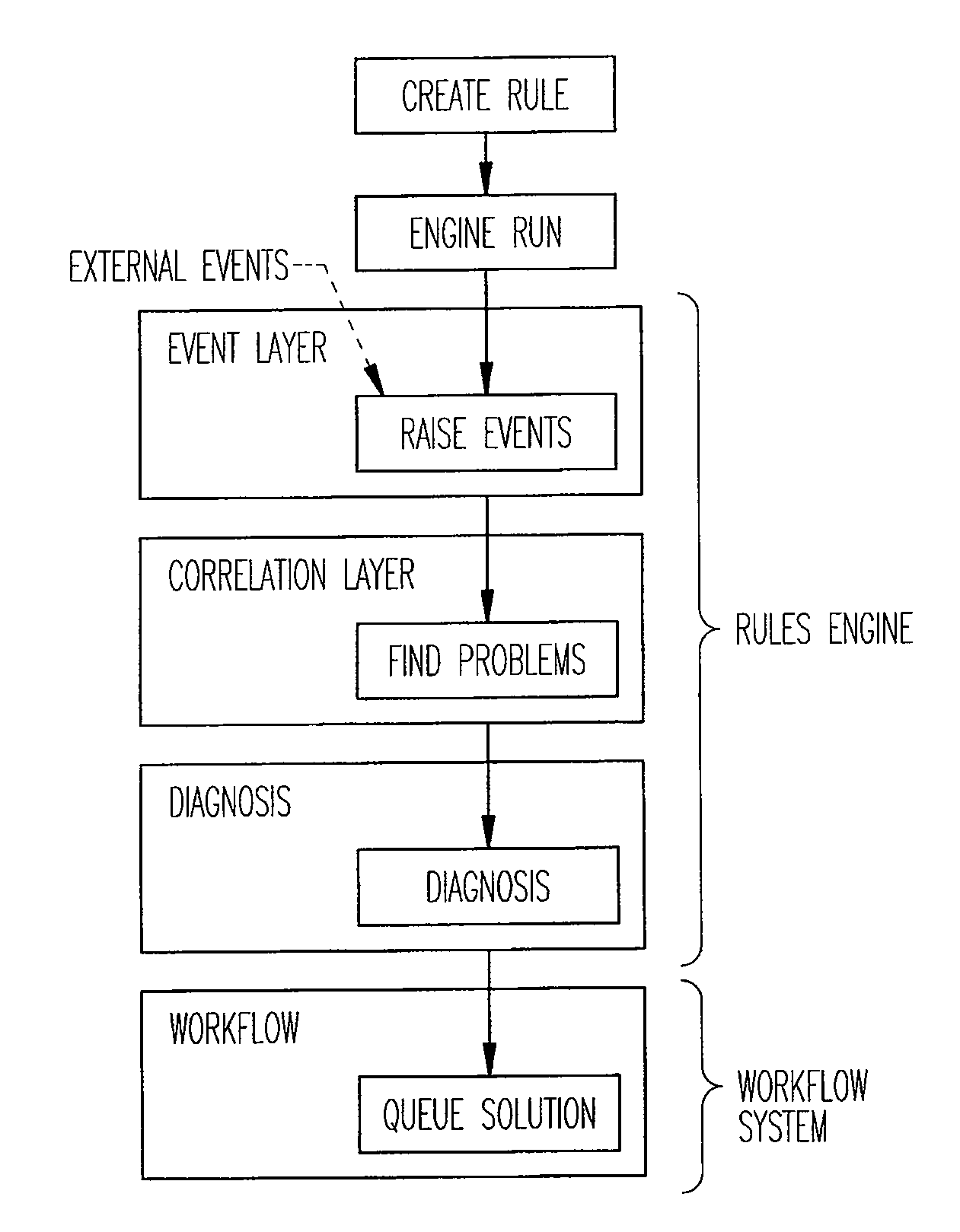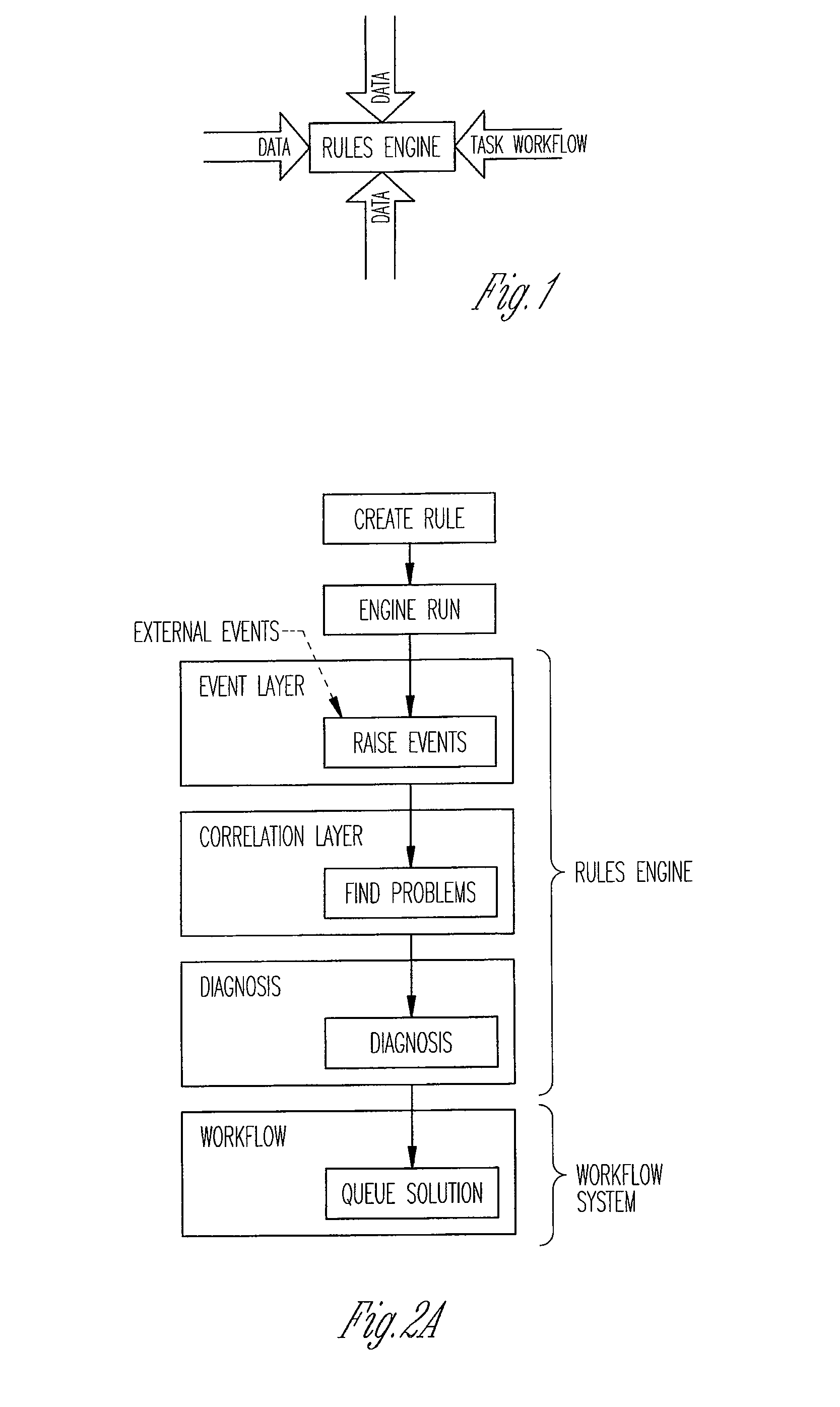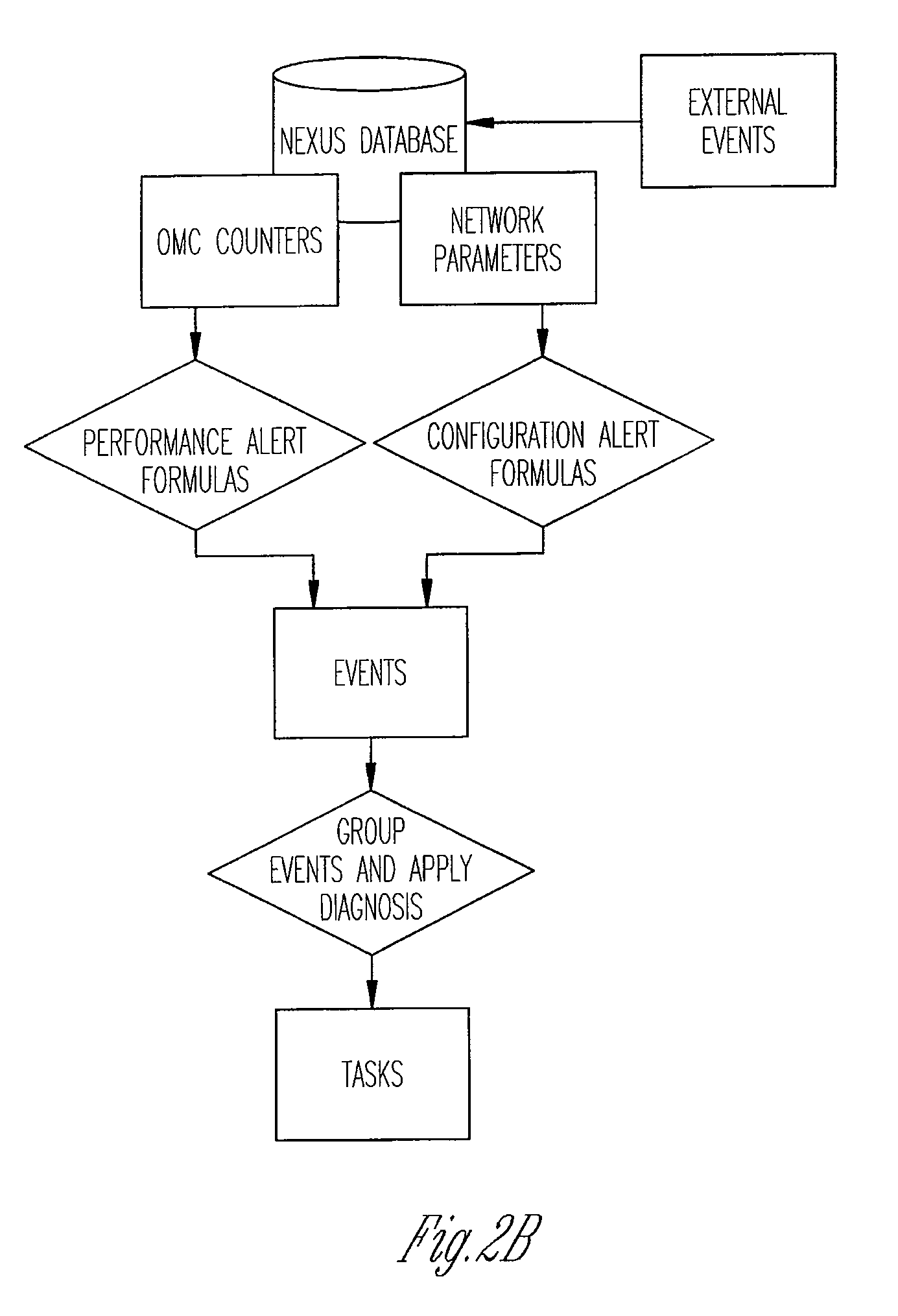Mobile phone network management systems
a mobile phone network and management system technology, applied in the field of mobile phone network management systems, can solve the problems of network operators currently having difficulty associating, inefficient, time-consuming, and difficult for engineers to manage changes in network performan
- Summary
- Abstract
- Description
- Claims
- Application Information
AI Technical Summary
Benefits of technology
Problems solved by technology
Method used
Image
Examples
Embodiment Construction
[0040]Broadly speaking, the embodiments of the present invention provide an automated performance management system for a digital mobile phone network that streamlines an engineers' work. The system utilizes the data in the network's existing systems and uses built-in intelligence to generate engineering tasks based on events that are detected in the data and to provide the engineer with a simple, process-driven desktop application (sometimes referred to as the engineering client) based around a task list and a map. The engineering client makes it easy for engineers to make fast and effective optimization decisions by combining their local knowledge (for example, about problems that started when the cranes were erected for that new tower block that is being built near the shopping mall) with the system's automated decision aids. The system also facilitates communication between and within the engineering teams.
[0041]FIG. 1 illustrates the concept underlying the system. Data is obtai...
PUM
 Login to View More
Login to View More Abstract
Description
Claims
Application Information
 Login to View More
Login to View More - R&D
- Intellectual Property
- Life Sciences
- Materials
- Tech Scout
- Unparalleled Data Quality
- Higher Quality Content
- 60% Fewer Hallucinations
Browse by: Latest US Patents, China's latest patents, Technical Efficacy Thesaurus, Application Domain, Technology Topic, Popular Technical Reports.
© 2025 PatSnap. All rights reserved.Legal|Privacy policy|Modern Slavery Act Transparency Statement|Sitemap|About US| Contact US: help@patsnap.com



